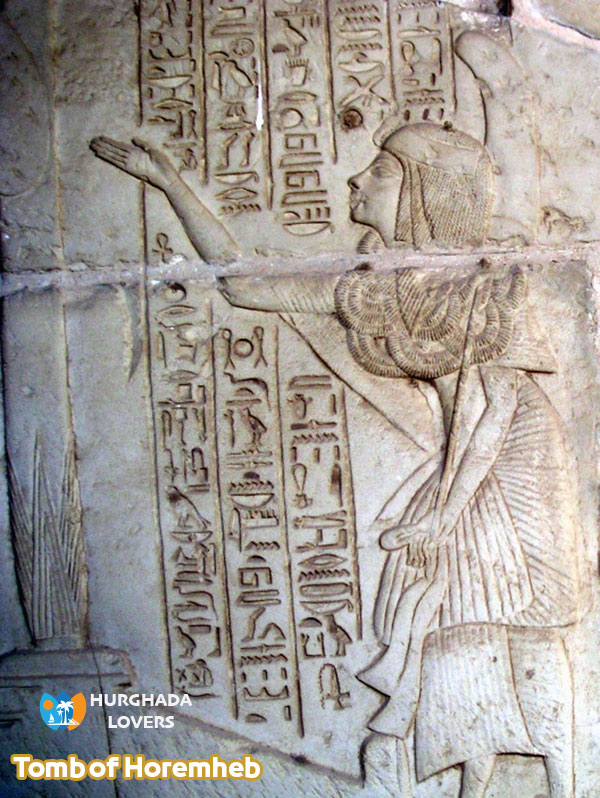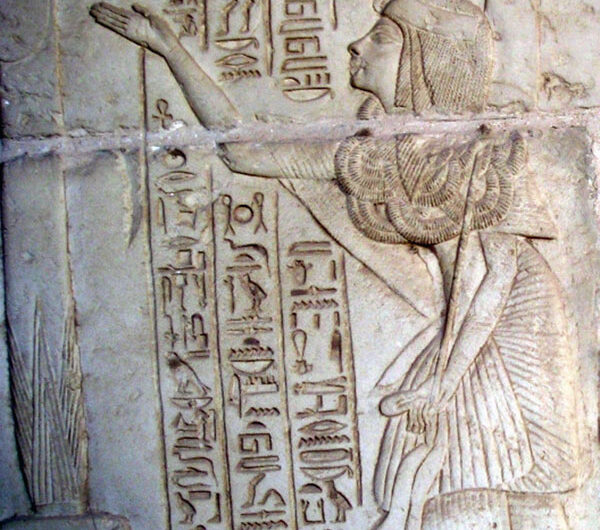Tomb of Horemheb in Saqqara, Egypt | Facts & History Building Pharaonic Tombs, and more about Cemetery Design and Decoration, Entry Ticket Prices…
Facts and history of building pharaonic tombs in the civilization of ancient Egypt, the eighteenth dynasty and more, the design of the cemetery, visiting dates, prices of admission tickets…
It was built before Horemheb took over the rule of Egypt. It is located in the Saqqara cemetery near the Memphis region. Although the tomb was not used to bury King Horemheb, it was used to contain other things. Learn about the effects that were found inside the tomb below.
Hurghada lovers Offer Luxury Hurghada to Pyramids Tours | El Gouna to Pyramids Tours | Makadi bay to Pyramids Tours | Sahl Hasheesh to Pyramids Tours | Soma bay to Pyramids Tours .
Tomb of King Horemheb
• King Horemheb is the last of the 18th Dynasty kings, and he ruled from 1323 to 1295 BC.
• Horemheb was one of the largest military leaders during the reign of King Tutankhamun, even holding the title of Viceroy of the whole land.
• Although the mother of the king’s tomb was built before he took power, he was not buried there, because he built tomb 57 in Thebes for the purpose of burial there.
• But the cemetery was used to bury his two wives, Mot Najmat and Aminia.
• The tomb is located approximately 500 meters south of the pyramid of Djoser, which is located in Saqqara.
• The tomb was discovered at the beginning of the 19th century by antiquities thieves.
• A group of looted items were smuggled to museums in Europe and America.
Stages of building the tomb of King Horemheb
• The tomb of the king came in three stages, which was getting more and more prestigious with the height of Horemheb’s stature.
• The first design consisted of an entrance that leads to a front courtyard. The courtyard is a court with columns.
• Among the columns inside the cemetery is a burial column and three chapels, which are rooms in which offerings were given to the god.
• A wall was placed in the front yard with the aim of creating two chapels, but they came in a small size.
• Also, a new front yard was built surrounded by a wall in front of the edifice, the terrace of the 5th and 6th family was demolished so that workers could extend this wall.
• After that, the burial column was incorporated into the burial chamber, approximately 16 meters away.
• The front yard was then closed by a 7-meter burrow.
• A set of military appearances and other scenes showing Horemheb performing his duties in the office were engraved on the walls of the open hall.
• There is another picture depicting Horemheb when he was Tutankhamun’s deputy, in addition to scenes from the funeral.
Facts
• The cemetery is the largest in the cemetery of the modern state, located to the south of King Unas Road.
• The cemetery was designed in the style of the temples of the great state.
• In the middle room inside the cemetery came an inscription of the symbol of the sun and the resurrection, and the burial room was located underground.
• The burial chamber is accessed using a vertical well.
• The remains of the bones of a fetus were discovered next to the skeleton of a female, believed to be due to the death of Nejmet, the wife of Horemheb.
• Among the other inscriptions that came inside the tomb are pictures of the inscriptions of foreign rulers while they begged King Tutankhamun, and Horemheb was a mediator between them.
• This inscription showed how close Horemheb is to Tutankhamun, and there are other inscriptions of Horemheb while receiving the gold of courage from the kings.
• In addition to other inscriptions depicting the ritual of opening the mouth during the mummification process.


